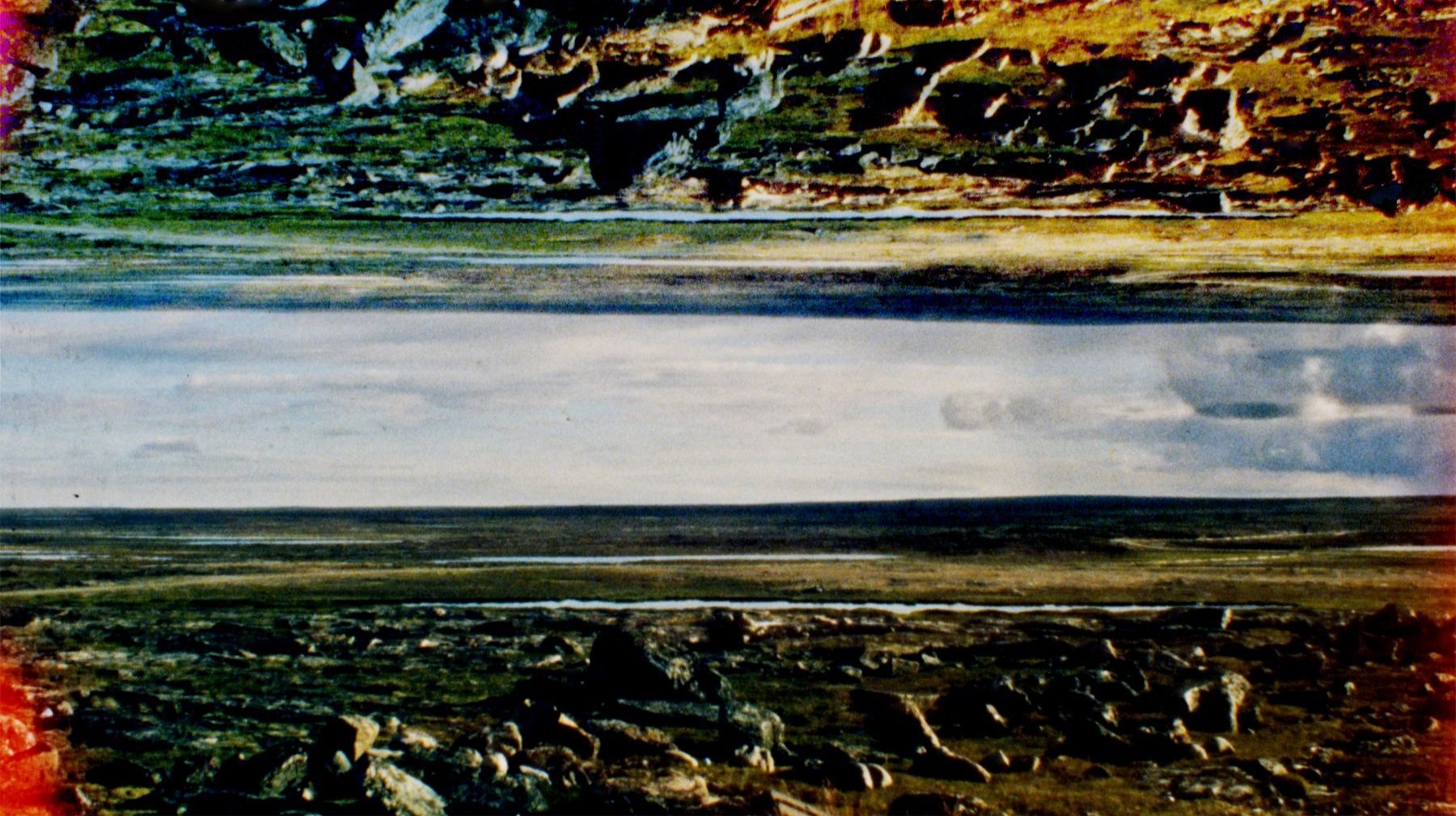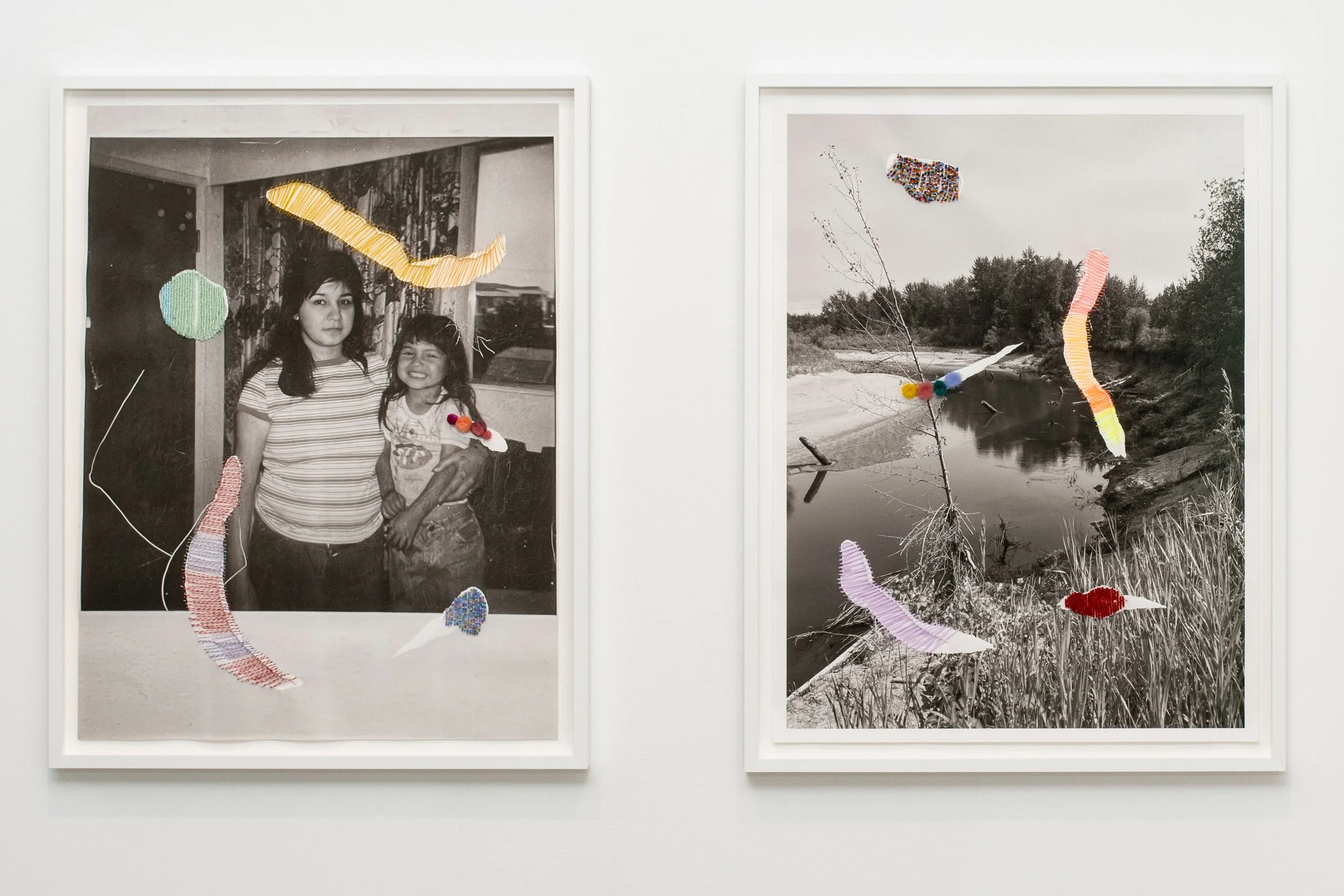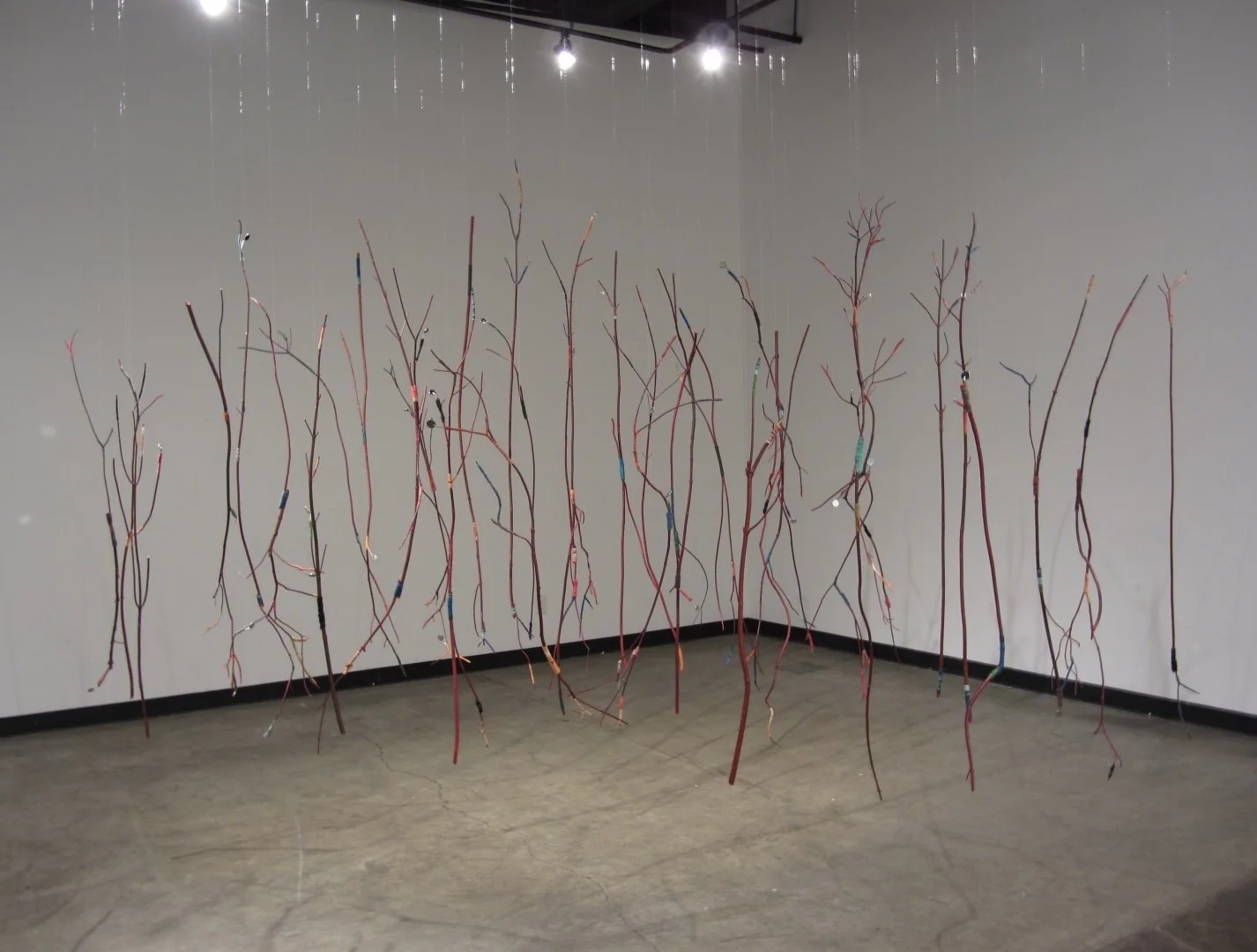At the Capture Photography Festival, Lindsay McIntyre's Tuktuit illuminates lost links to ancestral knowledge and natural world, to September 7
The filmmaker responds to colonial and industrial pressures with handcrafted practices that call out to her Inuit heritage

Lindsay McIntyre’s Tuktuit (still). Photo courtesy of the artist
Lindsay McIntyre: Distance Between Objects, Time Between Events is at the Contemporary Art Gallery from April 4 to September 7 as part of the Capture Photography Festival
ARTIST, SUBJECT, AND medium merge in fascinating ways in filmmaker Lindsay McIntyre’s provocative new experimental work Tuktuit. Standing at the centre of her solo exhibition Distance Between Objects, Time Between Events, which runs until September 7 as part of this year’s city-wide Capture Photography Festival, the resonant piece incorporates McIntyre’s practice of creating and processing the emulsions of her 16mm film stock by hand, allowing the tone and texture of her images to shift with changes in temperature, humidity, and other surrounding factors.
This process is central to Tuktuit, the artist’s intricate meditation on the skills and knowledge of her Inuit great-grandmother, and on the land and caribou that once fed her family in Qamani’tuaq (Baker Lake, Nunavut). Images waver and fade with irregularities in the handmade celluloid, created partly from caribou gelatin (instead of the cow gelatin used in industrially manufactured film). With Tuktuit’s still shots of landscape and the lichen that is the caribou’s primary food source, this instability evokes shifts in the northern ecosystem under the pressures of climate change, as warming and rapid freeze-thaw-freeze events disrupt ancient food chains.
Along with these images is footage of McIntyre herself, trying to process a caribou skin into rawhide without the expertise of her great-grandmother, whose presence on the land was removed in the 1930s by colonial edict—another broken chain. The tattered result of McIntyre’s efforts—a hide riddled with holes from her inexperienced scraping—hangs in front of the projection screen, one more strand in Tuktuit’s unsettling web of allusions.
Each connection opens paths to others, creating a uniquely powerful reflection on the fragility of natural and cultural networks and the stakes involved in their destruction. ![]()

Lindsay McIntyre’s Tuktuit (still). Photo courtesy of the artist
Related Articles
Centred around portals, this year’s just-announced lineup includes several visual-art exhibitions, Vancouver International Jazz Festival concerts, and more
Event inspired by the current exhibition A Tangled Thicket features hands-on art activities and a theatrical performance
At Richmond Museum event, visitors can explore over 50 partner sites, ranging from Seawrack Press Studio to LuLu Island Winery
With this gritty collection of street photographs, the Vancouver songwriter, poet, and playwright opens a new chapter in his hard-won life as an artist
As part of Asian Heritage Month, the gallery’s first performers-in-residence use old-school radios and headlamps in a new piece that fuses dance, multimedia, and theatre
A home tour of five West Vancouver residences, a film screening of Arthur Erickson: Beauty Between The Lines, and much more on offer
In Capture Photography Festival presentation, moving-image installation shows a bird’s-eye view of Klamath River restoration
Highly anticipated event features a festive atmosphere and performances in celebration of Asian Heritage Month
Marking its 25th anniversary, the inclusive two-day festival sets up in fields and by riverbanks, along with more conventional spaces
Graduating artists Wol-Un, Eden Eisses, Asad Aftab, and Claudia Goulet-Blais share insights on the works they’ll have on display
In partnership with Burnaby School District 41, exhibitions showcase artworks by elementary and high-school students
New video work traverses an interior landscape shaped by the perspectives of artists Min Kim and Mia Wennerstrand
North Van Arts exhibition features contemporary works by Daryl Lynne Wood, Lilian Broca, and Maria Abagis
In largest edition to date, exhibition features more than 420 works from across five degree programs
Works by internationally acclaimed mosaic artists Daryl Wood, Lilian Broca, and Maria Abagis to be displayed at CityScape Community ArtSpace
Series explores Rotimi Fani-Kayode’s practice through films, workshops, and lectures with queer Black and African artists and cultural producers
B.C.’s Charles Campbell and Tania Willard are also nominated for the Pacific Region in competition for country’s richest visual-art award
Z·inc Artist Collective brings deep curiosity and personal experience to meditations on networks that sustain and adapt
Funds raised from flash tattoos go directly to the Artist Survival & Healing Fund, which specifically benefits land-back and cultural-care workers
Relocation is temporary while the District of West Vancouver moves forward on plans for a larger purpose-built arts and culture facility
On May 10 and 11, more than 100 artists will showcase everything from stained glass to photography across 31 different locations
Working with local doctors and BC Parks Foundation, facility opens Emily Carr: Navigating an Impenetrable Landscape exhibition to those needing to improve their health and well-being
At the Vancouver Art Gallery, Jean Paul Riopelle retrospective covers five decades of his work, from 1942 to 1992
Opening night of the multi-artist exhibition features karaoke, storytelling, and music
New Capture Photography Festival exhibition at the Gordon Smith Gallery of Canadian Art moves the form through beadwork, weaving, handstitching, and more
Paintings and handcrafted installations by four Surrey artists revolve around the intersection of nature and humanity
The filmmaker responds to colonial and industrial pressures with handcrafted practices that call out to her Inuit heritage
Longtime Vancouver arts professional will oversee Eastside Culture Crawl, with Esther Rausenberg moving into new role as artistic director





























